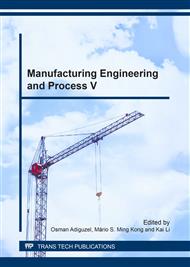p.55
p.65
p.74
p.83
p.89
p.96
p.100
p.104
p.108
FEM and Contour Method Study of Quenching Residual Stress of 7050 Aluminum Alloy Cross-Shaped Component
Abstract:
In order to study the quenching residual stress of typical aluminum alloy component used in aerospace, the finite element (FE) model of quenching process of 7050 aluminum alloy cross-shaped component was established based on heat transfer theory and elastic-plastic mechanics theory, the distribution regularities of quenching residual stress field of cross-shaped component was analyzed. The results indicate that the residual stress distribution of web of cross-shaped component is similar to the residual stress distribution of thick plate, the large tensile stress concentration is exist in web plate and the connection part of the stiffener with a certain influence area. The error data of the component contour deformation were processed and the component deformation contour was fitted, which makes the test result of the contour method and FE simulation result have good consistency. The results of the study provides guidance for quenching residual stress reduction of aviation aluminum alloy components and provides the basis for calculating of machining deformation of monolithic component.
Info:
Periodical:
Pages:
89-95
Citation:
Online since:
March 2017
Authors:
Price:
Сopyright:
© 2017 Trans Tech Publications Ltd. All Rights Reserved
Share:
Citation:


